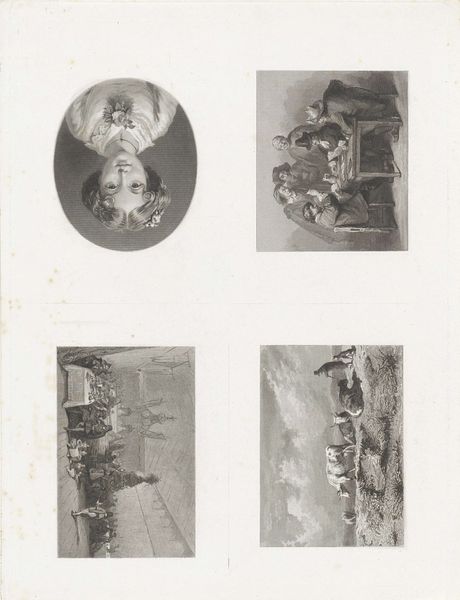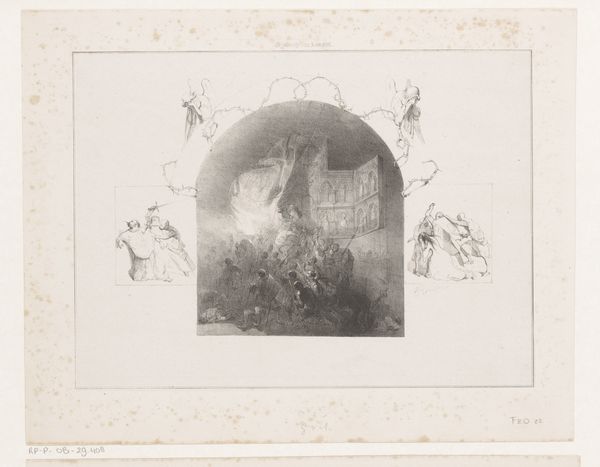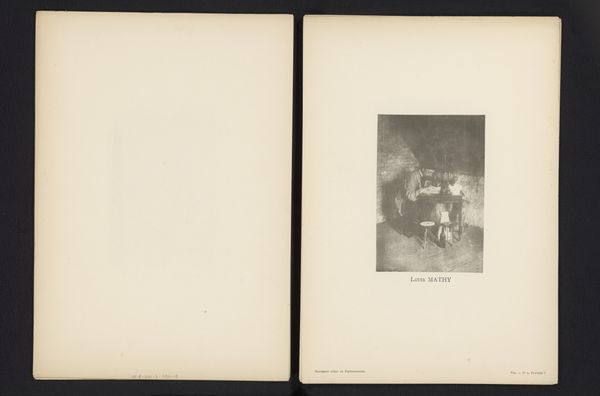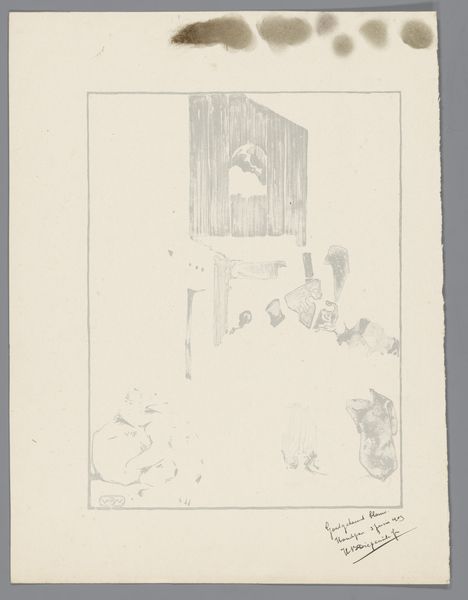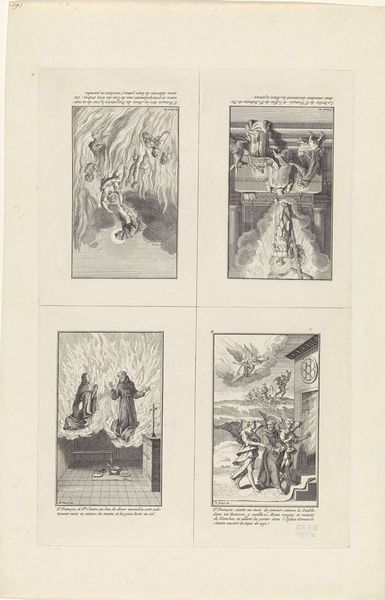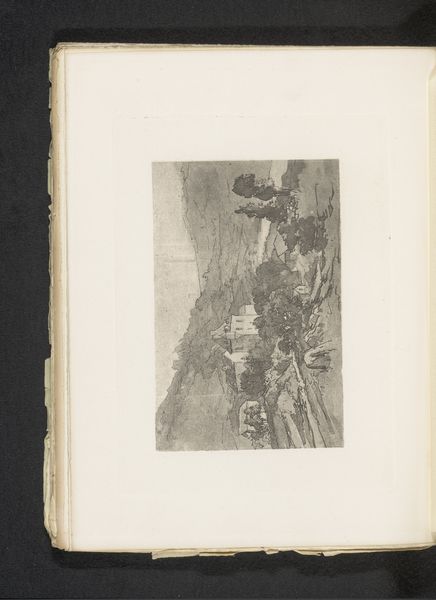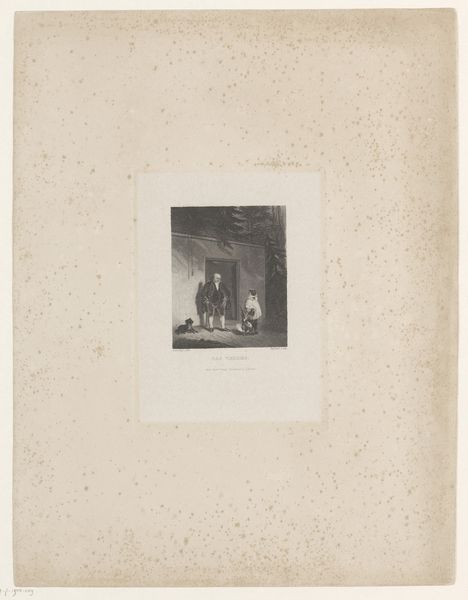
drawing, print, etching, intaglio
#
portrait
#
drawing
# print
#
etching
#
intaglio
#
figuration
#
genre-painting
#
history-painting
Dimensions: height 359 mm, width 278 mm
Copyright: Rijks Museum: Open Domain
Editor: This is "Blad met vier scènes met naar prenten kijkende mensen," dating from around 1880 to 1900, by Henri Patrice Dillon. It looks like it's an etching or other type of print, grouping four separate vignettes. I find the contrast between the clearly defined figures and the hazy, almost unfinished backgrounds quite striking. What stands out to you, looking at the composition? Curator: Immediately, the organization of the sheet commands attention. Note how Dillon utilizes a grid structure, subdividing the visual field into four distinct yet related zones. The top-left and bottom-right quadrants mirror each other in tonal value, creating a formal balance across the composition. Can you identify the shared structural element in these four distinct vignettes? Editor: Well, each vignette seems to depict people looking *at* something – other artworks perhaps? They are the common element among all scenes. Curator: Precisely. Dillon masterfully uses the concept of the gaze as a structuring principle. Let's look at the lines; the lines defining form and those that exist solely as texture, shadow. Notice how each vignette employs a different approach to line, influencing its emotional tone. The confident marks in the harlequin scene compared to the almost ghostly lines in the theatrical viewing: observe the emotional variances created in their starkly contrasted application. What can that suggest about Dillon's engagement? Editor: So, it seems that he uses variations in linework not just to depict, but to also evoke very distinct atmospheres within the same work. I hadn't considered how dramatically the formal qualities of mark-making could influence narrative and tone in such subtle ways! Curator: It shows how much can be gleaned through close examination of form itself! Seeing that emotional connection arise as the logical outcome of form… that's a revelation. Editor: Definitely. Analyzing the interplay between the depicted subject matter and the material execution, as you put it, creates another dimension to seeing.
Comments
No comments
Be the first to comment and join the conversation on the ultimate creative platform.
